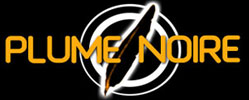
|
|
Ellen Burstyn, in a brilliant performance, plays Sara Goldfarb, a woman whose solitary life (interrupted by visits from her junkie son to take money) is changed by the offer to appear on television. Convinced she must lose weight in order to fit into a red dress for her appearance, she becomes addicted to diet pills and sleeping pills in the process. She's a TV junkie whose son Harry (played by Jared Leto) is a heroin addict trying to make enough money to keep himself, his girlfriend Marion (Jennifer Connelly), and their friend Tyrone (Marlon Wayans) high. The film follows their harrowing descent: Sara pops pills and hallucinates that her TV and fridge are attacking her, Harry steals and envisions the perfect score, while Marion sleeps with her creepy "therapist" and other distressing debasements to stay high. Watching them feed their cravings for the junk of TV culture and heroin is both difficult and exhausting. By showing the parallel tracks of the miserable existences of both mother and son, Aronofsky has artfully and effectively made it impossible for the audience to simply unsympathetically dismiss their delusion. Aronofsky posits that there is no real distinction between "hard drug" addiction and TV trash when it comes to not dealing with reality. Ellen Burstyn's character makes both worlds more accessible. After taking an interest in her, it's much easier to accept the others. Without watching how her addiction to her serves a greater purpose, it would have been much easier to dismiss heroin addiction. The acting deserves distinction. Burstyn especially brings a heartfelt, unselfish performance to the film as an innocent compelled by the same forces as her son. It's horrid to watch her transformation and she is completely unrecognizable by the end of the film. Jared Leto demonstrates a vulnerability and complete impetuousness of someone unaware of his true dilemma. Finally, Jennifer Connelley is very good and stands out in her willingness to take on a role that is consuming. She seems funereal and doomed, contrasting well with the almost childlike Harry. Her performance warrants much better roles in the future. The film was shot in a series of dreamlike images in infrared tones. Their dismal surroundings are brightened by images of better times and places. Aronofsky's sophomore effort is much more polished than Pi, while his taste for conspiracy remains. Some scenes don't really serve a purpose other than to quicken the pace to the final denouement. While driving from New York to Florida to score dope, Harry and Tyrone are arrested at the hospital they stop in after the gangrene in Harry's arm sets in. In the following scenes they are forced to work in a southern style chain gang while they clearly should be in detox. If his point is a condemnation of those entities that should be helping instead of hurting or even abetting (as in the case of Sara's doctor who has no problem pumping her full of pills), it is well taken. There is a bit of reference to other films in the heroin genre. The Little John character who feeds Connelly drugs in exchange for her body is reminiscent of Pulp Fiction's Marcellus Wallace and his power. Also, TV's seem to be the number one choice item to steal by heroin addicts. Harry and Tyrone's trek down the boardwalk to a pawnshop with his mother's set is a bit like the scene in Trainspotting where they steal a TV from the senior center. (Of course Aronofsky has a better twist: Harry is continually going to pawn his mother's set instead of directly stealing money from her. She in turn promptly goes to buy it back, thus indirectly sustaining his addiction.) The film is much better than Shadow hours in terms of including a series of quick images that show the effect of drugs once skin is pierced. Aronofsky's Requiem For A Dream is a brilliant, traumatic piece that perceptively captures the subconscious of people whose dreams are destroying them.
|
|

